Elephants are the largest land mammals on the planet. The image of an elephant is familiar to many people around the world. But how many of us truly understand this animal? Join KnowAllAnimals to discover “25 Amazing Facts About Elephants” in the following article!
1. 25 Amazing Facts About Elephants You Didn’t Know
If you are an elephant lover, join us to explore some Amazing Facts About Elephants through the following information.
1.1. Origin and Distribution
Elephants, being large and intelligent animals, are always a focal point of attention. There are many interesting things about elephants that you may not know. Let’s explore their origins, classification, evolution, size, unique trunks, eating habits, habitats, and their special social and memory skills. Elephants are distributed throughout Africa, South Asia, and Southeast Asia, adapting to a variety of living environments. They have a significant impact on their surroundings and form complex societies. Let’s learn about the diversity and unique characteristics of elephants in the animal kingdom.
African elephants are facing the risk of extinction, and Asian elephants are threatened. Poaching and the illegal ivory trade, habitat loss, and human-elephant conflict are major threats. Let’s work together to protect and preserve elephants, which are an important symbol in our culture and art.
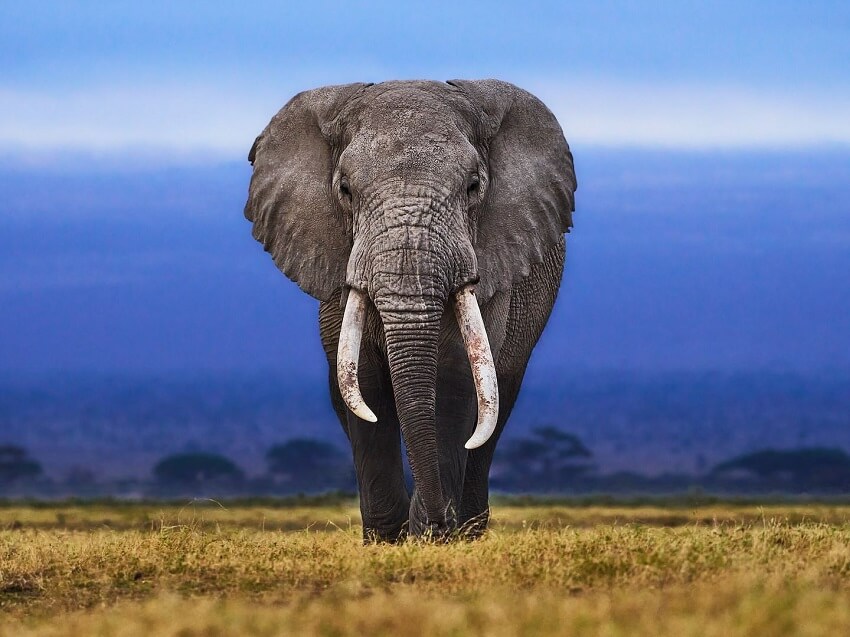
1.2. Evolution and Extinct Relatives
180 extinct proboscidean members have created a miraculous evolutionary journey. The first proboscideans appeared in the Paleocene epoch, with small genera like Eritherium and Phosphatherium. The Eocene epoch saw the emergence of Numidotherium, Moeritherium, and Barytherium, which were semi-aquatic. Diversity decreased in the Oligocene, but the appearance of Eritreum melakeghebrekristosi from Africa was significant. The Miocene epoch marked a second radiation, giving rise to the gomphotheres and members like Gomphotherium and Platybelodon. A third radiation began in the late Miocene, leading to the emergence of the elephantids, which replaced the gomphotheres.
The Pleistocene epoch saw a high rate of speciation, with Palaeoloxodon namadicus being the largest. Loxodonta atlantica and later Elephas iolensis became common in Africa. Elephants diversified in Asia, with species like E. hysudricus and E. platycephus, which are the ancestors of modern Asian elephants. Mammuthus evolved into species like the woolly mammoth. By the end of the Pleistocene, many proboscideans went extinct during the Quaternary glaciation event.
The uniqueness of proboscideans is their increase in size and the evolution of their trunks, teeth, and height. They have developed a mobile trunk, specialized incisors, and adapted to eating plants. The trunk is a flexible tool, and the large, powerful incisors help them with locomotion and feeding. They evolved from walking on the soles of their feet to walking on their toes, supported by footpads and sesamoid bones. Jaw and skull structures changed, and their cheek teeth became larger and more specialized. Elephants have a rich diversity of incisors, ranging from straight to curved and spiraled. They adapted to C3 and C4 diets and today have returned to a diet of trees and shrubs.
The ancestors of proboscideans have left behind traits like their middle ear and tooth structures. The increasingly large development of the trunk, a modern appendage, is an achievement of this miraculous evolutionary process. Elephants, symbols of strength and intelligence, are the result of an impressive evolutionary journey.
1.3. Classification System
Elephants, belonging to the family Elephantidae, are the only surviving order of Proboscidea within the superorder Afrotheria. Their closest living relatives are the sirenians (dugongs and manatees) and the hyraxes, all of which belong to the Paenungulata clade within Afrotheria. Elephants and sirenians are grouped together in the Tethytheria clade.
The two known species of African elephants are the African bush elephant (Loxodonta africana) and the African forest elephant (Loxodonta cyclotis) of sub-Saharan Africa. The Asian elephant (Elephas maximus) lives in South and Southeast Asia. African elephants have large ears, a concave back, wrinkled skin, a sloping abdomen, and a trunk with two finger-like extensions at the tip. Asian elephants have smaller ears, a convex or level back, smoother skin, a sometimes-sagging belly, and a trunk with one extension at the tip. The ridges on the molars of Asian elephants are narrower than those of African elephants, and Asian elephants have humps on their backs and depigmentation spots on their skin.
The African forest elephant, one of the African elephant species, has smaller, rounder ears and thinner, straighter tusks compared to the bush elephant. They are primarily distributed in the forest areas of Central and West Africa. Although they were traditionally considered to be the same species, Loxodonta africana, recent molecular studies suggest separating them into two distinct species: L. africana and L. cyclotis.
1.4. The Elephant’s Trunk Defines the Species
The elephant’s trunk is a remarkable fusion of the nose and upper lip. During the fetal stage, the upper lip and trunk are separate, but as it develops, the trunk becomes its most important and versatile appendage. The trunk is made up of approximately 150,000 separate muscles, with no bone and little fat. The muscles consist of two main types: superficial and internal. The superficial muscles are divided into upper, lower, and side muscles, while the internal muscles are divided into horizontal and radial muscles. The trunk muscles attach to a bony opening in the skull. The nasal septum contains small muscle units distributed between the two nostrils, with a cartilaginous division at the base. The trunk is considered a muscular hydrostat (like a tongue), operating through the coordinated contraction of its muscles. A unique nerve runs along both sides of the trunk, formed from the maxillary and facial nerves.
The elephant’s trunk serves many functions, including breathing, smelling, touching, grasping, and trumpeting. An elephant’s sense of smell is believed to be 4 times more sensitive than that of a bloodhound. The trunk’s flexibility allows elephants to perform twisting and coiling movements, helping them gather food, fight with rivals, and lift objects weighing up to 350 kg. The trunk is also used for delicate actions like cleaning their eyes and checking their nostrils, as well as cracking open peanut shells without damaging the nut. An elephant can reach a height of 7 meters and use its trunk to dig for water in mud or sand. They can also suck up food and water or spray water on their bodies. An elephant’s trunk can hold 8.5 liters of water, and they even spray dust or grass on themselves. Underwater, elephants use their trunks as snorkels to breathe.
African elephants have two finger-like extensions at the tip of their trunk, which they use to grasp and bring food to their mouths. Asian elephants, on the other hand, typically wrap their trunks around food before putting it in their mouths. The trunk muscles in Asian elephants are more coordinated and perform more complex movements. Losing a trunk can severely impact survival, although there have been rare cases of elephants surviving after their trunk was severed. One recorded case involved an elephant kneeling on its front legs, lifting its back legs, and grazing with its mouth. Truncus paralysis is a disease that paralyzes the trunk of African bush elephants, resulting from the degeneration of the peripheral nerves and muscles of the trunk.
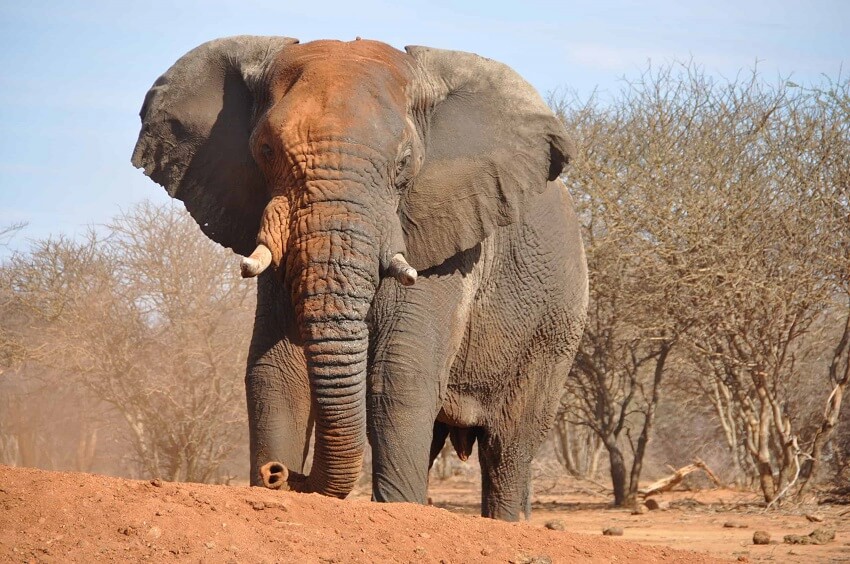
1.5. Elephant Size
Elephants, the largest land animals, with the African bush elephant being the biggest in size. Males can stand from 304–336 cm at the shoulder, weighing from 5.2–6.9 tons; females stand from 247–273 cm, weighing from 2.6–3.5 tons. A male Asian elephant has a shoulder height of approximately 261–289 cm, weighing about 3.5–4.6 tons; a female stands from 228–252 cm, weighing from 2.3–3.1 tons. The African forest elephant is the smallest species, with males standing about 209–231 cm and weighing 1.7–2.3 tons. Male African forest elephants are typically about 23% taller than females, while male Asian elephants are only about 15% taller than females.
An elephant’s skeleton consists of 326–351 individual bones. African elephants have 21 pairs of ribs, while Asian elephants have 19 or 20 pairs. The elephant’s skull is flexible to withstand the stress from its tusks and to protect the brain. The skull is wide and flat, forming a dome that protects the brain from all directions. An elephant’s skull has honeycomb-like sinuses filled with air, which reduces weight while maintaining strength. The large skull provides an area for muscle attachment and supports the head. An elephant’s lower jaw is strong and heavy. Elephants do not have lacrimal glands; the Harderian gland keeps their eyes moist. A nictitating membrane protects the elephant’s eyeball. Elephants are dichromatic, seeing well in low light but not in bright light.
An elephant’s ears have a thick base, thin edges, and many capillaries. The capillaries under the ear flaps help release excess heat. Elephants flap their ears to enhance this effect. The large ear surface area helps to effectively dissipate heat. The African forest elephant, living in tropical regions, has the largest ears of all elephant species. Elephants hear low-frequency sounds and are especially sensitive to frequencies around 1 kHz (close to Soprano C).
1.6. Habitat
Elephants spend about 16 hours a day searching for food and only sleep for 3 to 5 hours. They are capable of sleeping while standing or sometimes lying down. Despite being large and heavy, they are talented swimmers and can even swim in the sea. Their favorite activity is a mud bath, which helps them avoid the sun and protects them from annoying insects.
Elephants do not defend a private territory but prefer to live harmoniously in a herd. The oldest female elephant is the leader, guiding the herd to sources of food and water. The herd lives together and takes care of one another, especially the calves. When the herd is separated, the younger ones may leave but still maintain a relationship with their original family.
Young male elephants live alone or with other male elephants. The members of the herd often change. Elephants communicate through touch, smell, and their trunks, and their loud trumpet calls are how they call to each other and gather into a herd.
1.7. Eating Habits
An elephant’s size not only keeps them safe from all predators, but it also creates a massive eating machine. Each adult elephant consumes about 150 kg (300 lb) of food per day, including grass, small branches, leaves, and fruit, which requires a careful chewing process. Powerful molars in their mouth help them process food, but they are also the reason elephants grow teeth throughout their lives.
Elephants use their trunks to select food and bring it to their mouths. They pull leaves and branches down from above with their trunks and are also capable of knocking down trees when food is scarce. When thirsty, elephants use their trunks to dig deep for water and then suck the water into their trunks and spray it into their mouths. They consume large amounts of water daily and even use water to cool their skin by spraying it on their backs.
Elephants enrich the soil when they excrete feces, which can be processed into clean paper, opening up new possibilities for recycling and using resources from this animal.
1.8. Elephants Consume Nearly 1% of Their Body Mass Daily
Elephants consume nearly 1% of their body mass per day, which helps maintain their colossal bodies. With the ability to absorb a large amount of food, each adult elephant consumes about 60 kg of dry food per day, traveling dozens of kilometers to find the necessary food sources.
An elephant’s trunk is not only a tool for grasping food but also serves many other functions, such as touching, smelling, breathing, and making sounds. With over 40,000 muscles and tendons, their trunks have a high degree of precision, allowing them to perform tasks like picking up coins from the ground.
Elephants play an important role in maintaining the ecosystem, being described as “ecosystem engineers.” They are crucial for dispersing seeds and reinforcing the green canopy for all life forms.
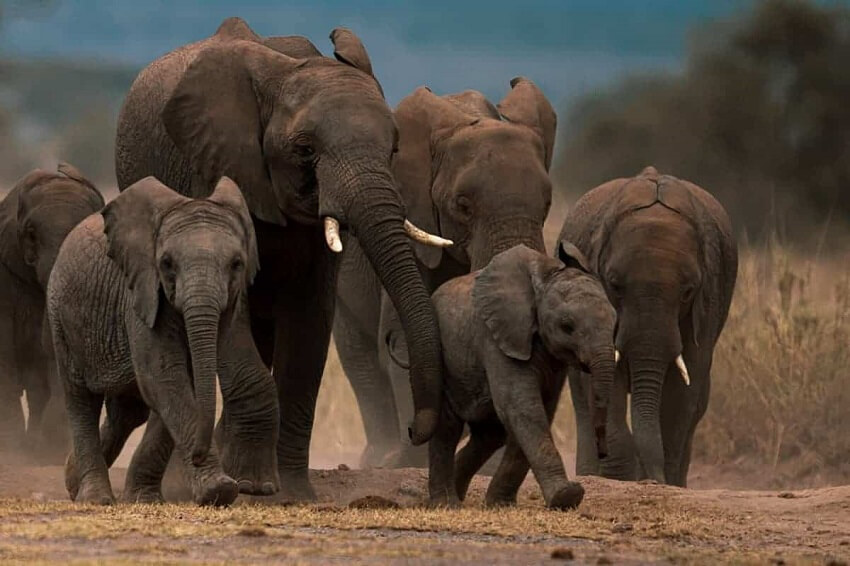
1.9. Elephants Are Emotional Beings
Elephants are not just large and powerful creatures; they are also deeply emotional beings. They have the ability to sense and show special concern for their deceased companions, even when they have been gone for many years. The diversity of nerve cells in an elephant’s brain is the decisive factor in their empathy, self-awareness, and social communication.
Elephants are silent, reserved creatures that express emotions deeply. They even have the habit of sharing their grief by covering the remains of their deceased friends with grass or dirt. Despite being large and powerful, elephants are gentle and behave like companions.
Elephants do not like to be ridden, and this not only causes them fatigue and pain but also harms their spine. Phajaan, the process of torturing elephants to domesticate them, poses a major ethical problem and requires that we protect these animals from unnecessary punishment and harm.
With the important lessons about the psychology and behavior of elephants, we need to respect and protect these beings from activities disguised as education and entertainment that do not ensure their welfare and natural freedom.
1.10. Elephants Possess an Extraordinary Memory
The special memory of elephants is not only a defense mechanism against predators but also a miracle of life. They follow a pattern recognition model, remembering relationships within the herd—from friends to enemies—with great clarity and for a long time. Elephants also memorize locations of food and water sources, demonstrating their ability to learn and innovate in daily life.
Research has revealed that elephants carry copies of two anti-cancer genes, P53. These genes act as guardians, detecting and eliminating cells with abnormal DNA before they can become tumors. This explains why the cancer mortality rate in elephants is very low, at just 5%, compared to humans with a rate of 25%.
1.11. Elephants Are Born Swimmers
Elephants are not just large, powerful land creatures; they are also talented swimmers. Although their massive bodies do not allow them to jump high or leap far, their swimming ability is top-notch. They can breathe through their trunks while their entire body is submerged. With this ability, they can swim continuously for about 51 km without any problems.
Elephants are famous not only for their excellent swimming ability but also for their extraordinary memory. Their memory helps them recall relationships within the herd, from friends to enemies, with great clarity. This is a great advantage for preventing enemies from harming them. Even after many years, elephants that once performed together can still recognize each other, which is a testament to the special memory of this species.
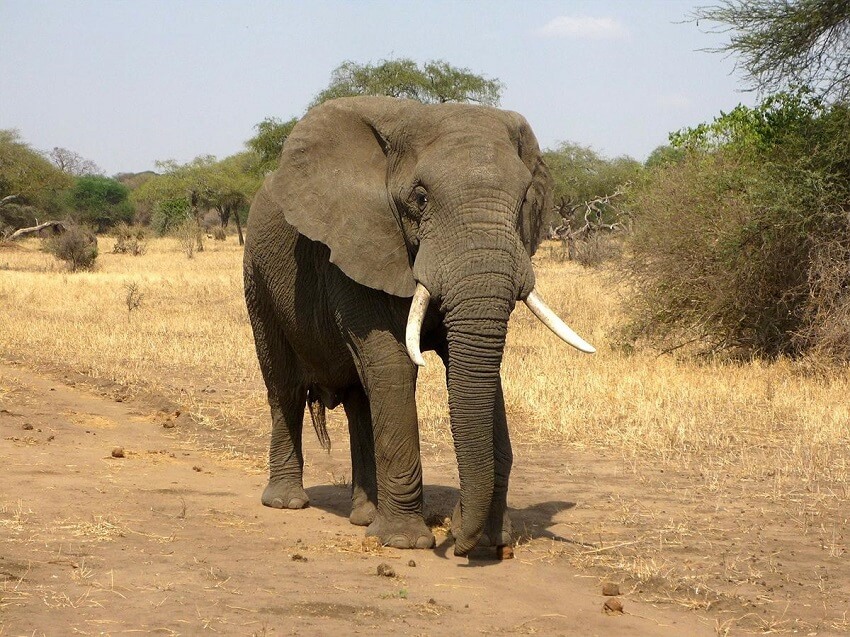
1.12. Elephants Use Tools and Mimic Human Voices
In 2010, Kandula, a well-known Asian elephant, impressed researchers by creatively using a tool to pick high-hanging fruit. He recognized a plastic box and used it to stand on to reach the fruit. This proves the elephant’s creative ability and understanding of tool use.
Not only did Kandula use tools, but he also used a stick to scratch himself in hard-to-reach places. Elephants also show an ability to dig small holes for drinking water and use a homemade ball of chewed tree bark to prevent the water from evaporating, saving it for later use.
In 2012, the Asian elephant Koshik astonished the research community with his ability to mimic human speech, specifically speaking five words in Korean. Although he may not have understood the meaning, this behavior was seen as Koshik’s way of bonding with humans, especially during his adolescent years.
1.13. Elephants Have a Specific Sign Language
Elephants use many subtle gestures and movements to communicate with each other. When they are angry, they often spread their ears. The family bond is shown by how a mother elephant caresses her calf. If an elephant makes an “S” shape with its trunk, it may be detecting your scent or awaiting new information in a dangerous situation.
When confused, an elephant may touch its trunk to its face, ears, mouth, or tusks as a self-soothing gesture. They show empathy and respect for their deceased family members.
The elephant’s brain is the largest among all land mammals. There are 257 billion neurons in the African elephant’s brain, which is three times more than in the human brain. The large cerebellum improves sensory function, helping the elephant absorb information from its surroundings and learn effectively.
For example, an elephant learned from a fellow herd member about a protected reserve and then used that knowledge to find help from humans when it was being poached.
1.14. The Elephant’s Symbolism in Culture
The elephant is depicted in a wide variety of cultures, from mythology to art, and is especially prominent in Asia and Africa. From cave paintings to painting, sculpture, music, films, and architecture, the elephant is a rich symbol.
Around the world, the elephant is often portrayed with meanings of respect and affection, especially in Indian and Southeast Asian cultures. They are considered symbols of strength in warfare and reliable allies in daily life.
Elephants are also domesticated to perform many useful tasks and have become an important part of people’s history and culture. They even become powerful partners in tasks like logging, plowing fields, and performing in festival events.
With its important role in psychology and culture, the elephant appears in many stories, myths, and folk traditions. They are a symbol of good luck, mental strength, and reverence for life.
1.15. Elephant Dung Coffee is the Most Expensive Coffee on the Planet
The unique type of coffee, elephant dung coffee, also called Black Ivory Coffee, has an astronomical price of up to 1,500 USD/kg, surpassing the famous civet coffee. This coffee is only available in Macau, China, with a slightly more affordable price of 488 patacas (about 60 USD) for 35 grams, plus a service fee.
The origin of this coffee began in Thailand, where elephants are raised and fed Arabica coffee cherries. The meticulous production process starts with collecting the coffee from the elephant’s droppings after they have “naturally fermented.”
Unlike civet coffee, elephant dung coffee is created with the cooperation of elephants and Thai Arabica coffee. With a limited output of only 200 kg per year, each kilogram of elephant dung coffee is the result of 33 kg of freshly harvested coffee cherries. Its unique aroma is a blend of chocolate, nuts, and hints of cherry and tobacco.
Elephant dung coffee is not just an expensive product; it is also a symbol of elegance and sophistication. It is served at 5-star resorts in Thailand, Malaysia, and the Maldives, and is exclusively available in the VIP gambling rooms at MGM Macau.
In Hong Kong, the passion for coffee tasting is growing, and elephant dung coffee is a unique and luxurious choice.
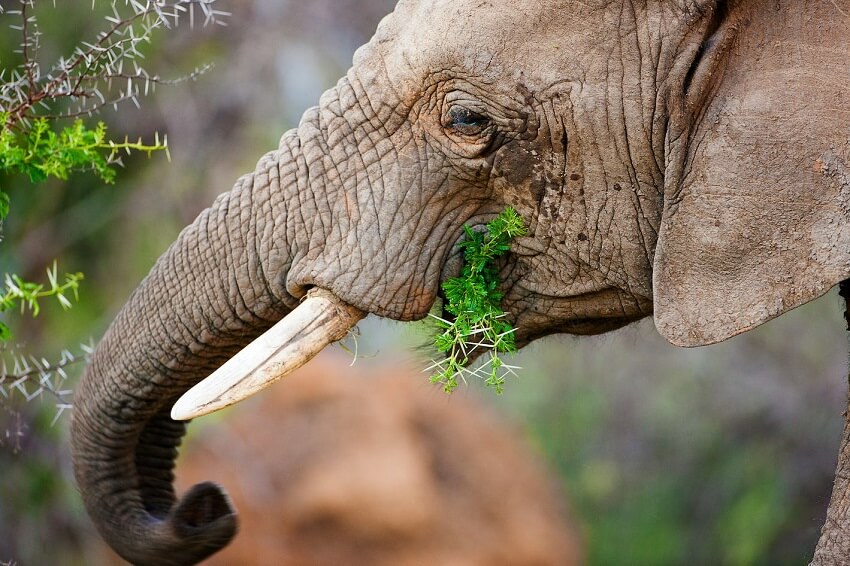
EXPLORE MORE INTERESTING FACTS ABOUT ELEPHANTS BELOW:
16. An elephant will spend about 16 hours a day eating.
17. Elephants sleep very little. These mammals sleep only about 3 to 5 hours a night.
18. Adult elephants usually sleep standing up, while calves will sleep lying down.
19. Their trunks have no bones. Over 150,000 muscles and nerves provide flexibility to their trunks.
20. An elephant’s skin is very tough and is about 1 inch thick!
21. The elephant has enough control over its strength to be able to pick up a raw egg with its trunk without breaking the shell.
22. The gestation period for an elephant is 22 months—longer than any other land animal. A human baby weighs an average of 7 pounds (3.1 kg), while a newborn elephant can weigh up to 260 pounds (118 kg). A newborn elephant can stand up immediately after birth.
23. Elephants use their trunks to grab food and put it in their mouths. Their main food source is grass and other plants on the ground. Elephants use their trunks to pull leaves, tree trunks, and branches down from above. When food is scarce, elephants use their tusks to knock down trees.
24. An elephant can fill its trunk with a maximum of 5 liters of water and then pour it into its mouth to drink.
25. The elephant listens with its feet as well as its ears.
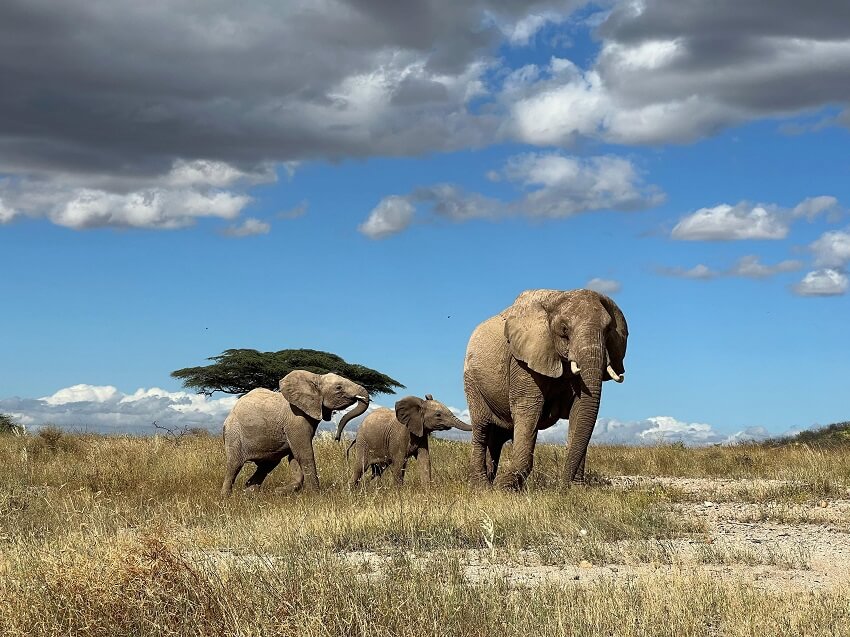
2. FAQs
1. Where do elephants originate and where are they distributed globally?
Elephants originated in Africa, South Asia, and Southeast Asia, adapting to a variety of different habitats. They are animals with complex social structures and have a significant impact on their surrounding environment.
2. How did elephants evolve?
The evolution of elephants began in the Paleocene with small genera. Over time, elephants evolved from smaller forms into the modern species we see today, with many changes in size and structure, especially the trunk.
3. What are the outstanding features of an elephant’s trunk?
The elephant’s trunk is a combination of its nose and upper lip, containing about 150,000 muscles. It serves many functions, such as breathing, smelling, grasping food, and expressing emotions.
4. How large are elephants?
Elephants are the largest land animals, with varying heights and weights among different species. An African elephant can stand up to 336 cm tall and weigh up to 6.9 tons.
5. What are the eating habits of an elephant?
Elephants consume about 150 kg of food per day, including grass and fruit. Their trunks help them select food and drink water, which is vital for their survival.
6. How emotional are elephants?
Elephants are very emotional, with the ability to empathize and express grief when they experience a loss. They perform special actions for their deceased herd members.
3. Conclusion
Elephants are not just colossal animals of nature; they also hold countless fascinating secrets that amaze people. From their intelligence and incredible memory to their rich emotional lives, elephants are truly one of the most special creatures on Earth. We hope that through these 25 Amazing Facts About Elephants, you have gained a clearer understanding of the world of elephants and will grow to love and appreciate wild nature even more.
References: https://en.wikipedia.org/wiki/Elephant



